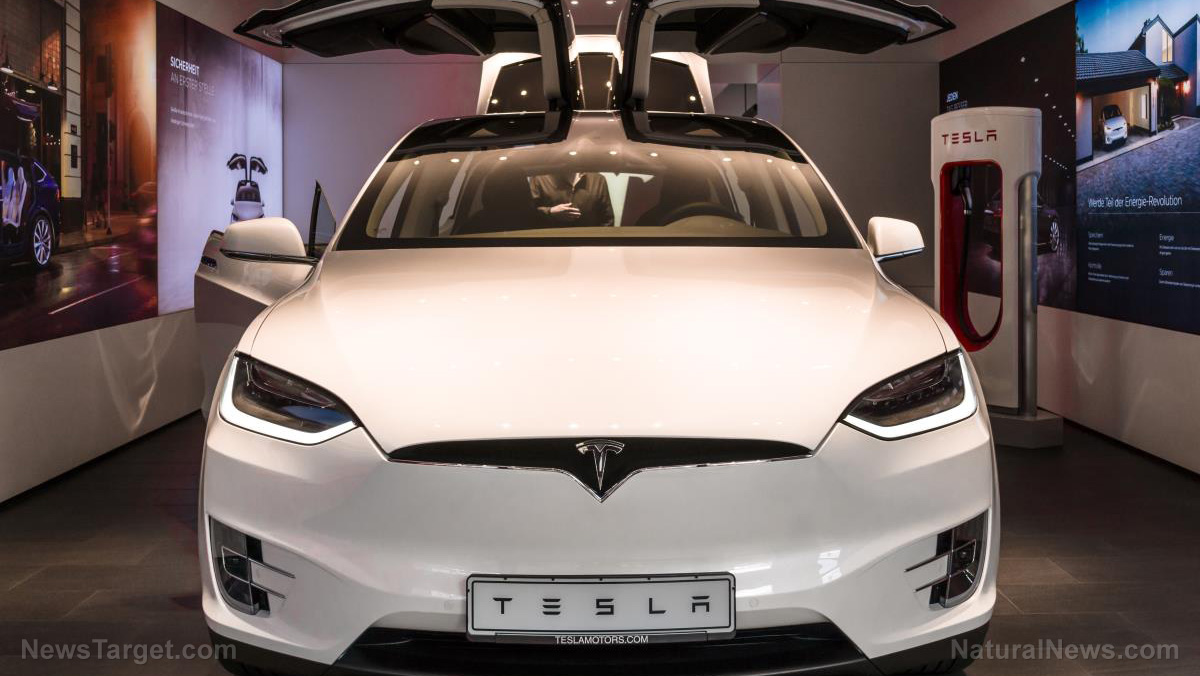Is Volkswagen’s new ID.3 electric car the “Tesla killer?”
05/19/2020 / By Franz Walker

Tesla has maintained a lead in the electric vehicle (EV) market, especially with its best-selling Model 3 sedan. However, other companies have started chipping at the Palo Alto, California, automaker’s lead. Volkswagen is one of these companies, and it’s taking aim at Tesla’s best selling model with its brand new ID.3, set to launch this summer.
Tesla’s Model 3 dominates electric car sales in America, having captured some 67 percent of the market in 2019. With its $41,190 SRP, 250-mile range, and generous storage space, Tesla’s compact luxury sedan hits the sweet spot for many Americans looking to buy electric. This is especially evident when compared to its nearest competitors, the much smaller Nissan Leaf and Chevy Bolt, which, while cheaper, have failed to truly challenge the Model 3.
With a similar range and size to the Model 3, on top of a much lower SRP, Volkswagen’s ID.3 looks like it could be the first serious challenger to the Model 3’s throne.
Volkswagen has done electric cars before
While the ID.3 is Volkswagen’s first electric model, this isn’t the Wolfsburg-based company’s first go at EVs. For years, the company has been showing hyping its upcoming I.D. range of electric cars with a number of concepts and prototypes at auto shows and motorsports events. In 2018, it’s electric I.D. R prototype racecar set the overall course record at the Pikes Peak International Hillclimb, being the first car to finish the historic course in under 8 minutes.
In addition, Volkswagen has also already taken a shot at Tesla’s flagship Model S through its Porsche subsidiary’s Taycan sports sedan. However, while that car was targetted more at enthusiasts, emphasizing Porsche’s heritage and sporting nature, ID.3 is being targetted at a more mainstream market.
Matching the Model 3
In terms of specs, the ID.3 mostly matches the Model 3, while beating it on price. Both vehicles are available with different ranged variants. The Model 3’s variants have claimed ranges of 220 miles, 250 miles and 322 miles each. Volkswagen, on the other hand, claims that the ID.3’s variants will run for 205 miles, 260 miles and 340 miles.
In terms of storage space, the Model 3 has 15 cubic feet in its rear trunk while the ID.3 has 13.6 under its hatch. Being a hatchback and not a sedan, however, the ID.3 should theoretically have much more space when the rear seats are folded down compared to the Model 3. Both also have extra storage in their front trunks, where the internal combustion engine would be in non-electric cars.
The Model 3 does beat the ID.3, however, when it comes to autonomous driving. The former comes with Tesla’s Autopilot system, while the ID.3 only comes with adaptive cruise control and lane assist. That said, Autopilot’s dodgy safety record may mean that having it isn’t that much of an advantage.
Where the ID.3 flat out beats the Model 3, however, is in price. While the cheapest Model 3 — the Standard Range Plus — carries an SRP of $41,190, Volkswagen is aiming for a price point of around $33,000 for the base ID.3 when it arrives later in the summer.
Building the ID.3
Whether or not the ID.3 can match the Model 3, however, may hinge on one question — whether or not Volkswagen can actually build the vehicle. Until recently, the ongoing pandemic caused by the Wuhan coronavirus put a stop to automotive production around the globe. However, one-by-one, automakers have started to open with Volkswagen restarting production in its main Wolfsburg plant on April 27. More importantly, production of the ID.3 at the company’s Zwickau plant resumed a few days earlier, on April 23.
If all goes according to plan, Volkswagen says it’ll have around 100,000 ID.3s ready in time for its summer launch. The only major stumbling block, at this point, is the software suite needed to run the car. Reports have come out that development on the ID.3’s software has been slower than anticipated due to a lack of developers.
Volkswagen has since stated that the car will launch with a functional version of the software suite in the summer, with certain features to be delivered in future updates over the internet.
“Vehicles built will be equipped with whatever version of the software suite is current at the corresponding time of their production and prior to their delivery to customers in summer will receive the latest version,” says a statement from the company. “Subsequent to the market launch the digital functions will then continue to be updated in regular increments in the following months.”
Sources include:
Tagged Under: automotive, automotives, battery, cars, electric car, electric vehicle, environ, EV, ID.3, innovation, inventions, Model 3, range, tesla, vehicles, Volkswagen, VW



















